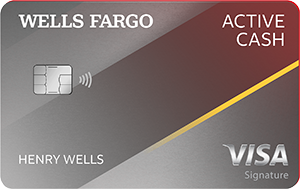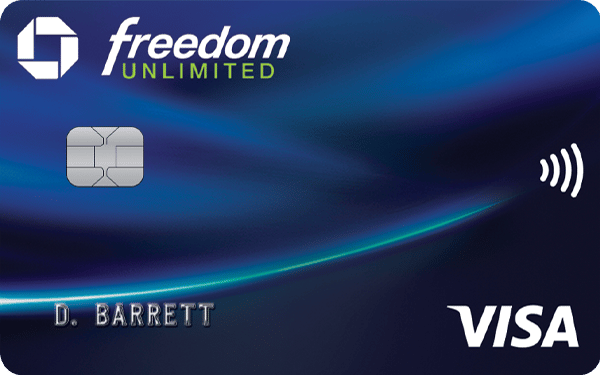The collapse of Silicon Valley Bank and Signature Bank® in March 2023 sent shockwaves through the financial world, causing investors and consumers alike to experience heightened anxiety. While these banks faced unique challenges that contributed to their downfall, it’s understandable for individuals to question the safety of their personal funds and contemplate switching to an alternative financial service provider.
Here’s what you need to understand about the security of your funds, along with a rundown of reliable banking options to explore should you harbor any lingering doubts.
Top 6 Most Secure Banks in the United States
In your quest for a new banking partner, it’s imperative to pay attention to certain defining attributes. Firstly, ensuring that the prospective bank is a member of the FDIC is paramount—while most banks fulfill this criterion, it’s always wise to confirm.
Moreover, larger banks typically offer enhanced safety measures owing to their diversified asset portfolios and stringent regulatory oversight, which reduces the likelihood of collapse. Bearing this in mind, here’s a selection of banks worth considering for your financial needs.
1. Chase
Regarded as the financial colossus of the United States and the fifth-largest banking institution globally, JPMorgan Chase boasts an impressive asset portfolio amounting to an astonishing $3.40 trillion. The origins of this banking behemoth can be traced back to 1877 when it was established under the moniker Chase National Bank. However, its historical roots extend even further, intertwining with the founding of the Bank of the Manhattan Company in 1799, with the two entities ultimately merging in 1955.
In its most recent financial disclosure, Chase reported a staggering net income of approximately $9.3 billion for the fourth quarter of 2023, a testament to its robust financial performance.
This banking titan offers a comprehensive array of financial products and services, catering to both individual consumers and businesses. Its offerings encompass a diverse range of banking accounts, credit card solutions, auto financing options, home loans, and an investment platform tailored to meet the diverse needs of its clientele. Notably, the bank’s deposits are safeguarded by the Federal Deposit Insurance Corporation (FDIC) insurance.
Security Measures:
• Customizable account alerts
• Two-factor authentication protocol
• Dedicated fraud support
• Credit Journey® identity monitoring service
• Robust 128-bit encryption for account access and transactions
FDIC Insured: Yes
2. Bank of America
Tracing its origins back to the establishment of Massachusetts Bank in 1784, Bank of America stands as the second-largest banking institution within the United States, commanding an impressive asset portfolio of $2.54 trillion. This financial powerhouse has woven an intricate tapestry of history, intertwining with the evolution of the banking industry over centuries.
In the fourth quarter of 2023, Bank of America unveiled its financial performance, reporting a substantial net income of $3.1 billion, underscoring its position as a formidable player in the financial realm.
Bank of America’s comprehensive suite of financial offerings caters to both individual consumers and businesses alike. Its diverse portfolio encompasses consumer and business banking accounts, credit card solutions, home financing options, auto loans, and a dedicated investment platform. Additionally, the bank rewards its loyal customer base through its Preferred Rewards program, which provides discounts, rewards, and other exclusive perks to customers maintaining eligible deposits of $20,000 or more. Notably, the bank’s deposits are safeguarded by the Federal Deposit Insurance Corporation (FDIC) insurance.
Security Measures:
• Two-factor authentication protocol
• Account alerts for detecting unusual activity
• Robust encryption protocols
• Scam and fraud education resources
• Account security meter
FDIC Insured: Yes
3. Wells Fargo
Wells Fargo, established in 1852, has a storied past similar to other prominent banks on our list. Currently, it stands as the fourth-largest bank in the United States, managing assets worth $1.73 trillion.
In the final quarter of 2023, Wells Fargo reported a net income of $3.4 billion.
Wells Fargo provides a comprehensive range of products and services, including consumer and small business bank accounts, credit cards, personal and auto loans, home loans, as well as investment and wealth management services. The bank is insured by the FDIC.
Security Measures:
• Continuous fraud monitoring
• Data encryption and browser security
• Automatic session termination
• Two-factor authentication
• Account activity alerts
FDIC Insured: Yes
4. Citi
Citi®, initially established in 1812 under the moniker First National City Bank, has since evolved into the third-largest banking institution within the nation, commanding an impressive asset portfolio valued at $1.68 trillion.
For the fiscal year 2023, Citi reported a net income figure of $9.2 billion, despite incurring a loss during the fourth quarter of the same year.
As a valued Citi client, you gain access to a diverse array of financial products and services, encompassing consumer and business banking accounts, credit card offerings, personal loan facilities and lines of credit, home mortgage solutions, business lending products, and an investment platform. Notably, the bank’s deposits are safeguarded by the Federal Deposit Insurance Corporation (FDIC).
Security Measures:
Two-factor authentication protocol
Fraud detection alert notifications
128-bit encryption technology
Biometric authentication option for secure sign-on
FDIC Insured: Yes
5. U.S. Bank
The origins of U.S. Bank can be traced back to the First National Bank of Cincinnati, which received its charter in 1863. Despite being the newest institution on this list, there is a notable difference in size between Wells Fargo and U.S. Bank®, though U.S. Bank still boasts considerable assets totaling $651 billion.
For the second quarter of 2023, U.S. Bank announced a net income of $1.63 billion.
Customers of U.S. Bank have access to a variety of financial products and services, such as personal and business accounts, credit cards, personal loans, lines of credit, home and auto loans, wealth management services, and more. The bank is protected by FDIC insurance.
Security Measures:
• No liability for unauthorized online transactions
• Various identification verification tools
• Automatic security notifications
• Data encryption
• Security assessment tool
FDIC Insured: Yes
6. PNC Bank
PNC Bank has a rich history dating back to its formation in 1983 through the merger of Pittsburgh National Corporation and Provident National Corporation, with roots extending to 1852. Currently, PNC ranks as the sixth-largest bank in the United States, with assets approximating $557 billion.
For the fourth quarter of 2023, PNC Bank reported a net income of $883 million.
PNC provides an extensive range of banking products and services for consumers and small businesses, including deposit accounts, credit cards, mortgages, student loans, auto loans, personal loans, and investment options. Like U.S. Bank, PNC is also FDIC insured.
Security Measures:
• Two-step verification process
• Account alerts
• Fraud and suspicious activity support
• Data encryption
FDIC Insured: Yes
Identifying a Secure Financial Institution
In times of economic instability, ensuring your bank deposits are protected is crucial. Thankfully, most banks provide insurance for deposits, so you don’t have to choose a large institution to safeguard your funds.
However, it remains important to evaluate a bank’s track record and financial health when considering your options. Even with insurance, the collapse of a bank could necessitate finding a new one.
Here are the key aspects to examine when choosing a secure bank:
1. FDIC-insured Accounts: Ensure the bank is insured by the Federal Deposit Insurance Corporation (FDIC).
2. Size and Assets: Consider larger banks with substantial assets.
3. Security Measures: Check that the bank prioritizes the safety of deposits and online accounts.
Final Thoughts
As with any financial choice, take your time to compare several banks to find the one that best meets your needs. Sometimes, it may be beneficial to hold accounts at multiple banks to leverage the unique advantages each offers.
FAQs
Q1: Are there any financial institutions that lack Federal Deposit Insurance Corporation (FDIC) coverage?
A1: While uncommon, certain banks operate without the protection of FDIC insurance. It is crucial to verify a bank’s insurance status through reputable sources, such as their website or the FDIC’s online lookup tool, before entrusting them with your funds.
Q2: Can member-owned cooperative financial organizations face insolvency akin to traditional banks?
A2: Credit unions, like banks, can potentially encounter financial distress leading to failure during economic downturns or crises, although such occurrences are exceedingly rare. While credit unions may have a reputation for more conservative investment strategies, any purported advantage over FDIC-insured banks remains debatable. If your credit union deposits are backed by the National Credit Union Administration (NCUA) insurance, your funds are safeguarded up to the specified coverage limit in the event of institutional collapse.
Q3: Which banking products lack FDIC insurance coverage?
A3: The FDIC insurance does not extend to non-deposit investment vehicles such as stocks, bonds, and mutual funds. Additionally, cryptocurrencies, safe deposit box contents, and life insurance policies are not insured by the FDIC.



















